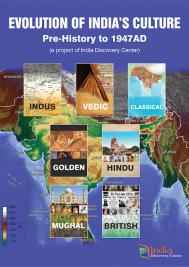Contribute
| India Mughal-Maratha Period (1500CE-1800CE) – Economy And Politics |
Hardik Dixit
08/25/2022
India Mughal-Maratha Period (1500CE-1800CE) – Economy and Politics Hardik Dixit Mughals expanded on agriculture as their main source of revenue. Forests were cleared to create new farming land. Irrigation network was created. The produce was organized and the surplus was exported. Cotton, textile, indigo and opium were popular in foreign countries. Agra, Lahore, Fatehpur-Sikri and Banaras were the new trade centers. Urban development created jobs. The taxes were centrally managed with efficiency. The Economy was around 25% of world GDP. The efficiency failed to be be maintained with the imposition of differential tax structure on farm produce. The GDP gradually declined to around 17% by 1800CE. (Figure-1). Figure-1: Angus Madison (2003). "The World Economy: Historical Statistics". Mughal’s central administration included four principal officers. These were Diwan, who performed activities of the chief minister, Mir Bakshi, heads the military, Mir Saman, an officer responsible for making all the purchases for the royal household, and Sadr, an officer in charge of religious matters. Figure 4 shows the Mughal king Akbar’s assembly of ministers. The Mughals standardized the rupiya currencies introduced by Sher Shah Suri during his brief rule. (Figure 5) Judicial courts during the Mughal period were both religious and secular. Cruel punishments like whipping, impalement and execution made people fearful. The penalty of not paying taxes resulted in confiscation of lands that gave rise to landless peasants who turned laborers. These insecurities impacted the economy of the village. Emperor Akbar took advantage of the internal rivalries among The Rajput Kings and succeeded in penetrating Rajputana (current day Rajasthan). While the empire expanded and reached zenith, Shah Jahan’s four sons plotted conspiracy against him and against each other. Aurangjeb took over but faced internal strife. The Mughal empire collapsed after the death of Aurangzeb. The Maratha kingdom, founded by Shivaji (Figure 6), rose up as an opposition to the expansion of Mughals. He expanded his kingdom and dominated many forts. The old Vijay-Durga on the werst coast was reengineered to be a hideout of the strong Maratha Navy Figure 7. Shivaji and the Marathas strove to grant religious freedom to all. Eight central ministers advised the king on finances and politics. Talented people were hired irrespective of religion and caste. ministers were accountable and they were not allowed any inheritance while in administrative office. The kingdom was structured into provinces, which were further divided to districts and villages. These were headed by “Mamlatdar†and “Deshpande†or “Patel†respectively. Judiciary was conducted by the village panchayats and other cases were presented to the king. The Marathas collected two taxes. 1. Chauth which is one fourth of the farm income, 2. Sardeshmukhi, a 10% levy to the king. Land was measured, and produce was estimated to calculate the tax. Cultivators were paying roughly 35% of revenue as tax. The Ryotwari system was established where tax was collected directly from the farmers. In case of famine, the state offered loans to peasants. Many foreign countries established their warehouses in India. The British East India company started trading on a large scale, and Britain gradually emerged as a dominant player in the Indian subcontinent. Political upheavals and British exploitation caused the economy to stumble. References: 1 – India A History by John Keay 2 - The cultural heritage of India, Volume II - Ramakrishna Mission - Institute of Culture, Calcutta 3 – India Discovery Center presentation by Bhavani Vankineni https://www.indiadiscoverycenter.org/economy-and-politics/ 4 - Angus Madison (2003). "The World Economy: Historical Statistics". https://www.oecd-ilibrary.org/development/the-world-economy_9789264104143-en Image references – Figure 1 – Angus Madison (2003). "The World Economy: Historical Statistics". By M Tracy Hunter - Own work, CC BY-SA 4.0, https://commons.wikimedia.org/w/index.php?curid=34088252 Figure 2 - European Settlements - Figure 3 - Akbar darbar - http://jameelcentre.ashmolean.org/collection/8/sort_by/date/sort_order/asc/per_page/25/offset/0/object/12453 Figure 4 and 5 - Wikipedia Figure 6 - Shivaji - Figure 7 - Vijaydurg Fort - -------------------------------------- Mr. Hardik Dixit leads the Economy and Politics track in India Discovery Center's project on "Evolution of Indian Culture: Pre-history to 1947AD". More information and updates on the project are available at https://www.facebook.com/Evolution-of-Indian-Culture-An-IDC-Project-107749391111922 Information on India Discovery Center is at https://www.indiadiscoverycenter.org (c) Copyright 2022 India Discovery Center, Inc. All rights reserved.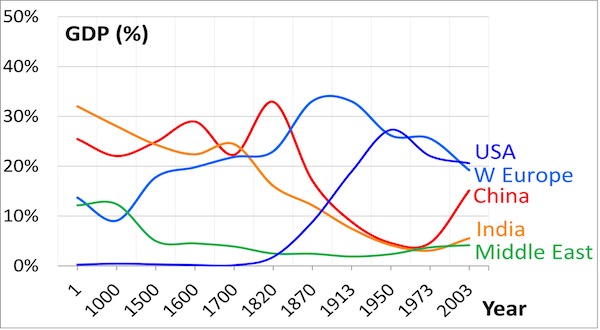
Through European settlements and their new warehouses, as shown in the figure-2, Indian goods were transported to communities of Dutch, Portuguese, French, Danish and English. Principal imports were horses, velvets, guns, and scents. Two major sea ports flourished during this period, Surat on the western coast, and Hugli on the eastern coast of India. (Figure 3).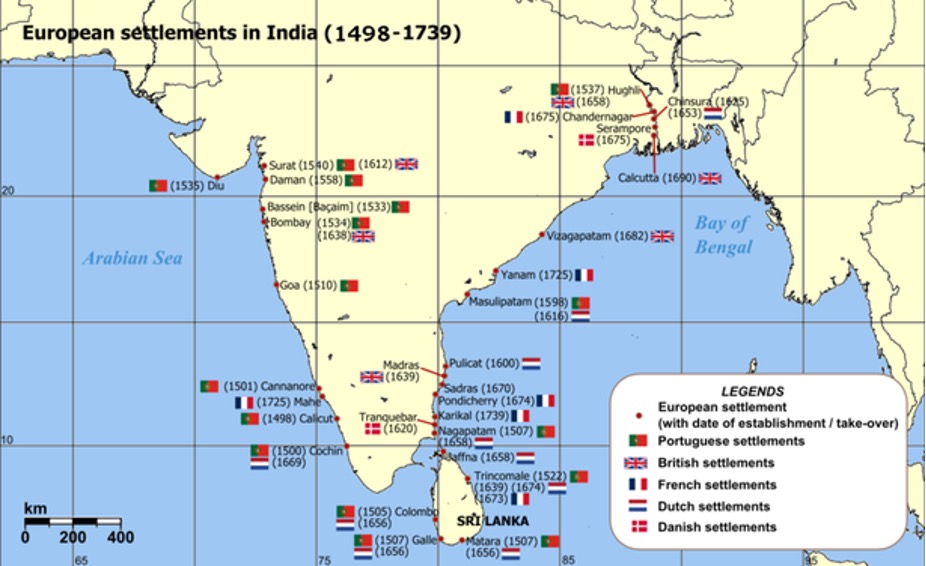
Figure-2: European settlement in India for trade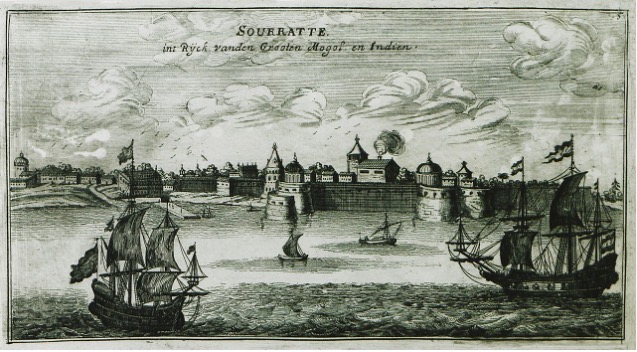
Figure-3: Surat in 1690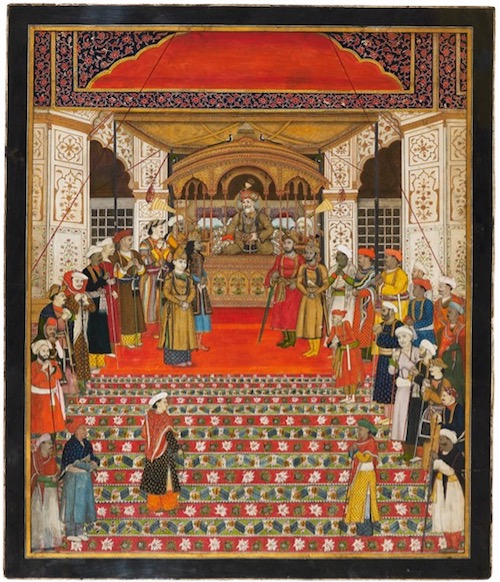
Figure 4 – Akbar’s court (painting of the period), 1600CE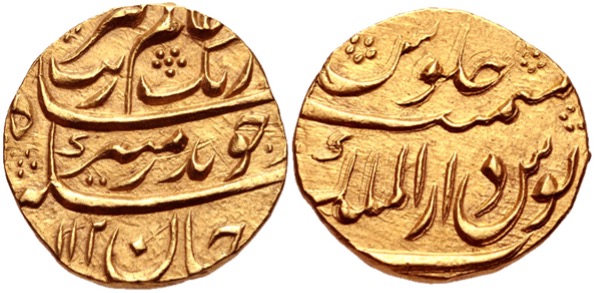
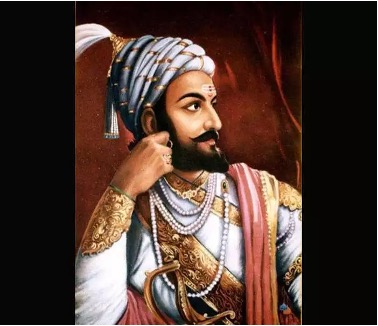
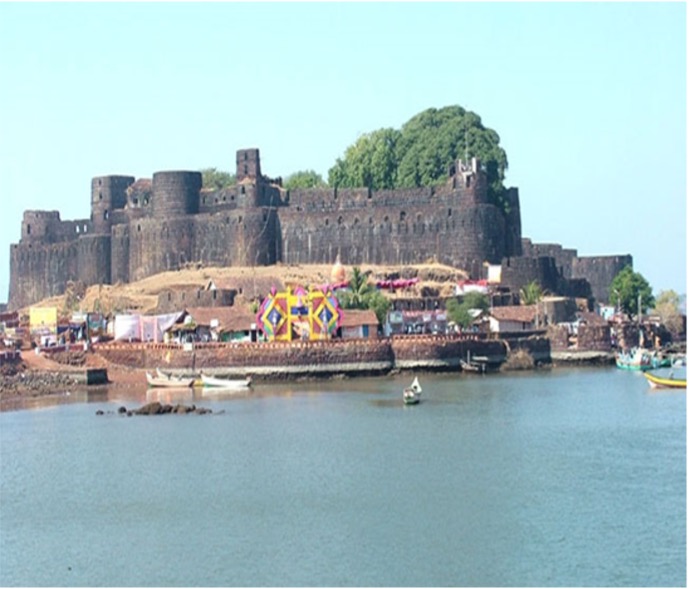
https://mughalimperialpresentation.weebly.com/economy.html
https://www.businessinsider.in/thelife/personalities/article/chhatrapati-shivaji-maharaj-quotes-with-meaning/articleshow/74200875.cms
http://www.walkthroughindia.com/offbeat/top-13-magnificent-forts-chattrapati-shivaji-maharashtra/
You may also access this article through our web-site http://www.lokvani.com/
